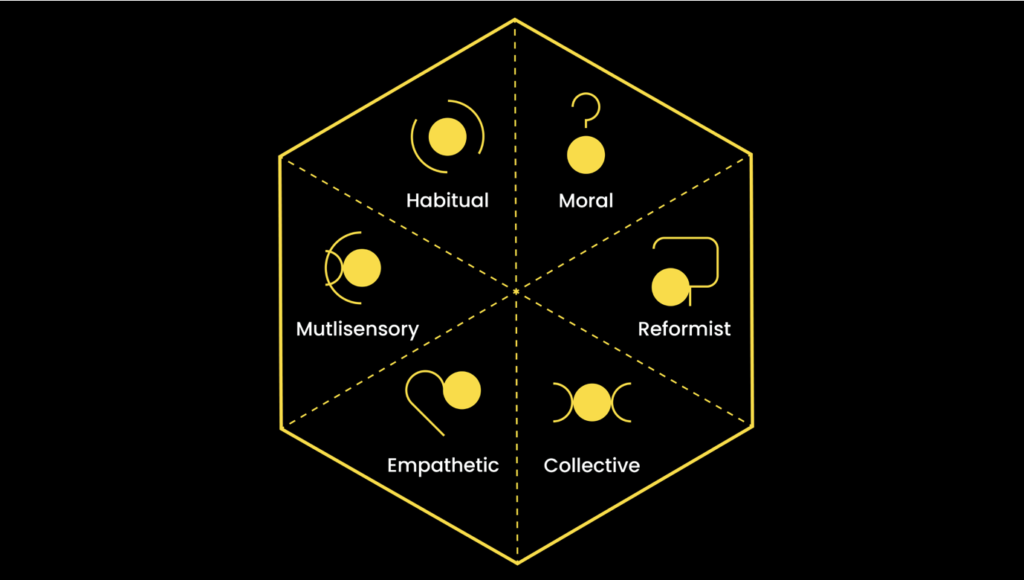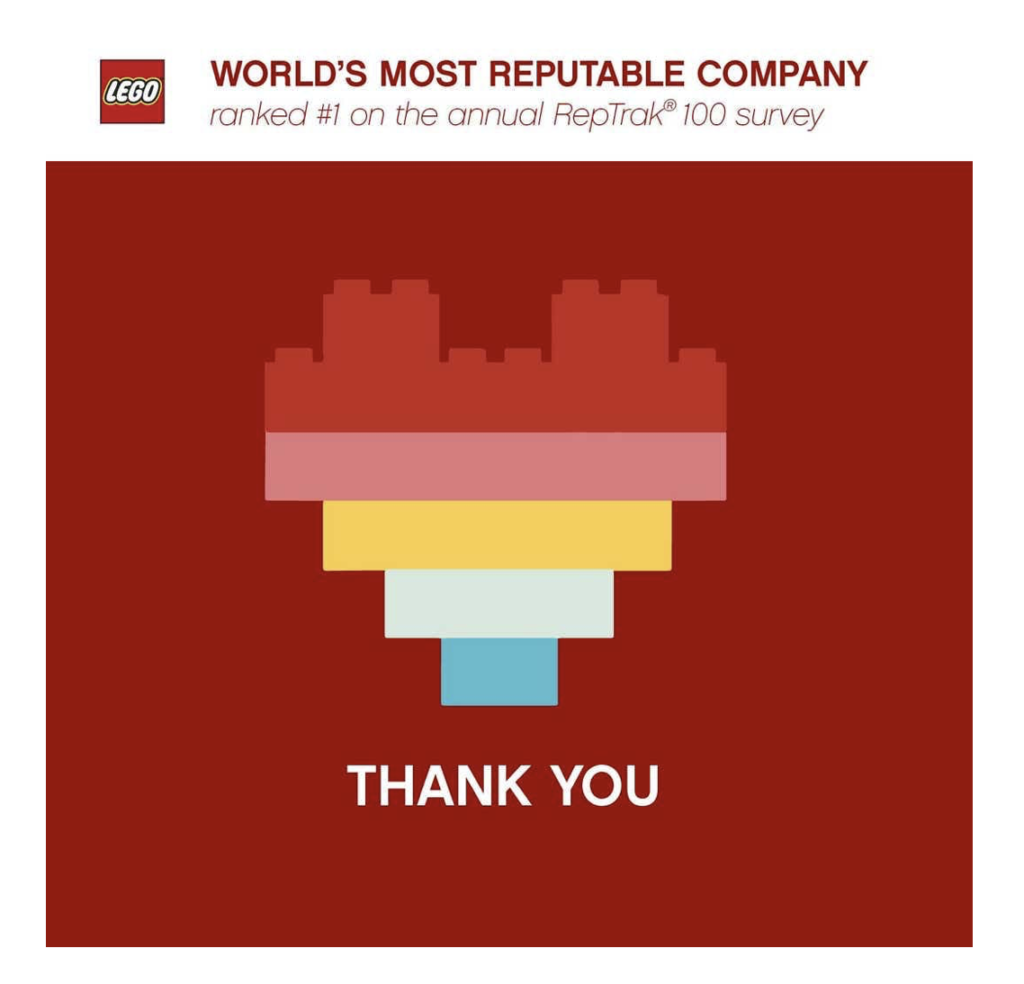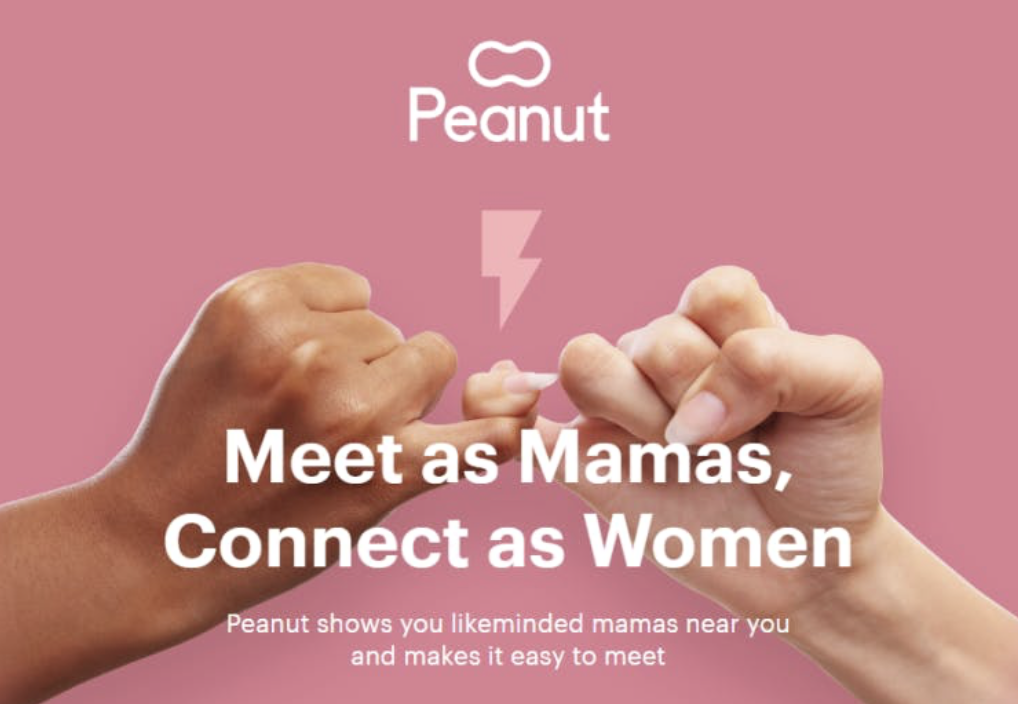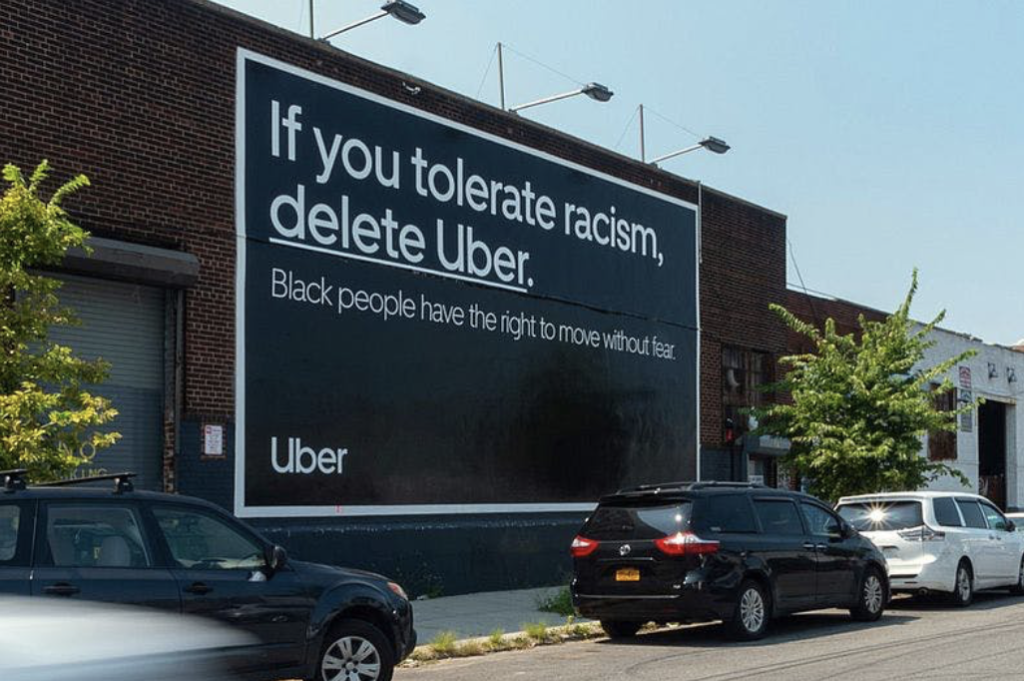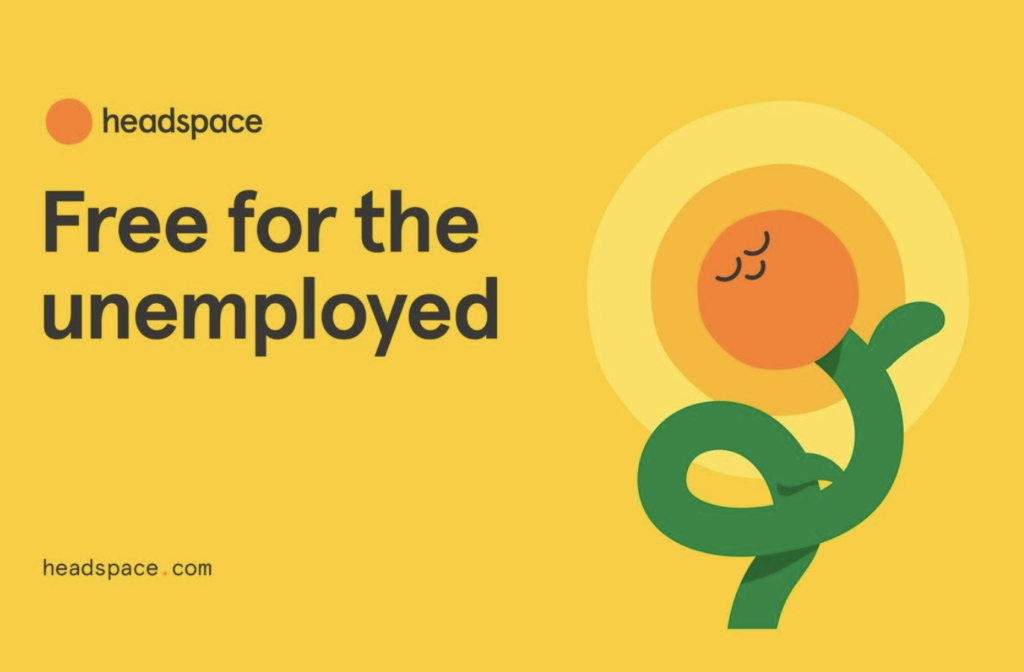Conscious Brands are: Empathetic, Multisensory, Habitual, Reformist, Collective and Moral.
This new ‘Conscious Brand’ is capable of being more responsive (to desires, moods and culture) and more responsible (helping people, partners and the planet grow).
To be ‘conscious’ means to be aware of and respond to your surroundings. So by calling for more conscious brands, we are calling for businesses to stop ignoring – consciously or not – the world around them.
And there’s a lot that brands often choose to ignore. For example, debates surrounding race, privilege, inequality, fake news, automation and climate change that all make for front page news are often uncomfortable arenas for brands – especially those which lack a genuine sense of purpose.
But it’s not just big societal issues that brands ignore. They also frequently make us feel unimportant or unseen on an individual level – bombarding us with tone deaf advertising, repetitive emails, notifications, demands for our data and personalised recommendations that are obviously the work of a mindless bot. You liked that, so you’ll like this. Or maybe you won’t.
By choosing to ignore these kinds of issues – personal and planetary – brands risk becoming insensitive and irrelevant. Many brands are working hard to do better.
Some (like Patagonia) take a stance on politics and equality and communicate it in their advertising (‘When the polls open, we close’). Others (like Oatly) help to normalise carbon positive behaviours through an innovative product, packaging and personality. And some brands (like the BBC and its Bitesize service) offer essential education services at a time of national crisis.
But the diverse nature of these examples shows that there are many ways in which brands can ‘do better’. So, to help brands self-analyse and move forward in an actionable way, (and do what’s right for them) we’ve devised a new framework called the ‘Six signs of a Conscious Brand’. Our hope is that it highlights some of the big shifts that Conscious Brands make – and shows how those shifts link back to driving stronger brand and business performance.
1. Empathetic
Most brands already endorse a need for personalization and communicating in a ‘human’ way.
But often this results in the same set of outcomes, for example recommending obvious things you already know about; or speaking with a trite pseudo-casual voice (using phrases like ‘Hi!’ ‘Hello! <insert first name here>, how’s it going today?’ and the inevitable ‘Oops!’)
Ironically, talk of personalization and humanity has created predictability and blandness.
This is important to call out because brands that sound the same and encourage us to behave in the same ways fail to stand out from the crowd, be remembered and get chosen.
By contrast, brands that show an understanding of cultural context and users’ wide range of emotions can win a greater share of voice and mind.
For example, Spotify curates mixes, podcasts and new releases in a way that’s designed to deliver ‘the right music for every moment’. This ensures users of the service feel that the platform always has something fresh and relevant for them – whether that something suits their mood, routine, tastes or the time of year.
This behaviour also influences Spotify’s voice in communications – highlighting users’ weird and wonderful playlists and listening habits in a locally relevant way. So, when it comes to analysing how Conscious a brand is, a good question to ask yourself is: “Does this brand go beyond bland personalisation – to demonstrate true empathy with its users’ lives?”
2. Multisensory
As new technologies and channels have exploded, brands have attempted to serve and communicate with users in a ‘multimedia’ way. This offers numerous benefits including reaching more people, more often and in more places that suit them.
But too often, brands ‘copy and paste’ the same brand assets, content and communications into multiple channels so users see the same stuff over and over again. This is counterproductive as people quickly learn to screen out (and ultimately avoid) brands that bore and interrupt them.
By contrast, TikTok is a brand that moves the game on by being multisensory, rather than just multimedia. Unlike its many social competitors, it is loud, colourful, constantly moving and encourages users to respond on an emotional level rather than bombarding you with messaging, menus, choices, lists and follower requests.
And, despite what its critics like to think, TikTok doesn’t just utilize this multisensory approach for spurious ends. During lockdown, it successfully drove responsible behaviours through the #iwillsurvivechallenge (where users washed their hands to the Gloria Gaynor anthem), and the #stayathomechallenge, where NHS workers and TikTok Creators urged users to stay indoors, sharing exercise routines or cooking tips to pass the time. (The #stayathomechallenge notched more than 2.6bn views.)
So, when it comes to analysing how Conscious a brand is, a good question to ask yourself is:
“Does this brand go beyond filling multiple media channels to excite and engage our many senses?”
3. Habitual
A delicate balancing act that many brands work hard to pull off is being simultaneously frictionless and engaging. That’s because on the one hand, they need to help users execute things like purchases efficiently and with minimal fuss; but on the other hand they need to make an impression and give people more reasons to try, buy and recommend.
Resolving this tension is not easy if all you have is a transactional relationship with your users – where their primary motivations (speed and convenience) often conflict directly with a brand’s desire to upsell and cross-sell. Would you like fries with that?
But brands can overcome this tension if they give some serious thought to the day-to-day role they play in users’ lives.
Apple is a good example of a brand that is committed to building healthier daily habits – rather than just alerting you to new messages or emails – via the Apple Watch.
Primarily centred around three Rings (Move, Exercise and Stand), the Apple Watch’s Activity app encourages you to set personal goals and ‘Close Your Rings’ every day. Complete a Ring and you’ll get a spinning Catherine wheel firework indicating you’ve done well. Complete all three and you complete the day. Get seven in a row and you get a perfect week.
This elegant piece of user interface design encourages positive daily behaviours: Users take delight in visibly progressing towards their goals and the closing of a circle becomes a ritual that is more satisfying and compelling than tracking endless steps and calories.
This approach works on both sides of the equation: users discover more frequent, positive reasons to engage with the brand; and Apple can create a more engaged and loyal base as a result – reducing its costs of marketing, acquisition and retention.
So, when it comes to analysing how Conscious a brand is, a good question to ask yourself is: “Does this brand go beyond the transactional to create a delightful and healthy set of daily habits?”
4. Reformist
Lots of brands feel it is important to be seen as an ‘ethical employer’ – especially if they operate in sectors that are heavily regulated, resource-intensive or constantly in the media spotlight.
But often, the drive to be seen as ethical feels more like a compliance exercise than one that proactively addresses what’s wrong with the world – internally and externally. For example, employees are all too often asked to memorise a set of corporate values and agree not to contravene them.
Some communities – like the B Corporation movement – are striving to drive progress and societal impact by committing a league of global brands to a Declaration that states:
“That we must be the change we seek in the world.
That all business ought to be conducted as if people and place mattered.”
These are standards that many otherwise ‘ethical’ employers fall below. For example, despite its admirable work to raise awareness of issues surrounding race and inequality, Nike has been called out for running an Executive Board with below average ethnic and gender diversity.
By contrast, LEGO (now ranked as the World’s Most Reputable Company by the annual RepTrak®100 survey) actively partners with communities, charities and other brands to build valuable life skills while having fun. For example, LEGO is a vocal advocate for the learning of STEAM subjects (science, technology, engineering, arts and math) and partners with tech events specialist RE:CODE to get hundreds of children inventing, creating and coding robotic models that solve real issues, mostly around sustainability.
So, when it comes to analysing how Conscious a brand is, a good question to ask yourself is: “Does this brand go beyond ethical employment to driving reform and social change – internally and externally?”
5. Collective
Fairly or not, a common criticism levelled at brands – and consumer culture in general – is that they encourage overconsumption, which leads to unhealthy lifestyles and ecological harm. Some brands aim to combat this perception by promoting restraint. Please drink, gamble and fly responsibly.
But this approach simply shifts responsibility (some might say blame) onto end users. Effectively, you’re asking people to keep consuming, but to stop if they start giving an industry a bad name.
As the folks at New Citizenship Project note (themselves a B Corp), studies show that when people think of themselves as just consumers, they’re less likely to tackle society’s biggest problems, from climate change to international inequality.
So what if brands thought beyond endless consumption as their end goal – and started treating people like a collective of citizens?
Peanut is an example of a brand that set out to do just that. Peanut launched in 2017 to solve a problem encountered by many new mothers: a feeling of isolation. The free app gives women access to a social network to connect with others across fertility and motherhood – and it’s now endorsed by the NHS. Peanut’s users (so far US and UK-based) are highly diverse and often create groups to reflect their own backgrounds and interests, including highly engaged breastfeeding, LGBT and Muslim mum groups.
Peanut is an example of a brand that doesn’t just target an emotion or a ‘need state’ with a consumer product; instead it is a platform that serves hugely diverse citizens to organise themselves and overcome the practical and emotional difficulties that arise (but are often ignored or considered taboo) at an incredibly important moment in human development.
So, when it comes to analysing how Conscious a brand is, a good question to ask yourself is: “Does this brand go beyond selling disposable products to empowering collectives of citizens?”
6. Moral
Today, many of us are asking ourselves whether it’s enough to simply be aware of the world’s problems, or whether we need to start proactively fighting injustice and inequality.
For brands, the answer has long been to take a narrow, product-based view of their purpose and to effectively remain amoral, avoiding taking any kind of political or social stance or the associated risks, such as offending people’s sensibilities and ultimately turning away potential customers.
But as brand boycotting (with campaigns like #deletefacebook) becomes more prevalent – spurred on by issues like trust and safety, dodgy tax dealings or questionable political and ethical policies – brands have to ask themselves if they can afford not to get off the fence and speak up for what they believe is right and wrong in the world.
It wasn’t long ago that this idea of having a moral purpose seemed radical. It seemed like only the Nike’s of the world – brands built on boldness and daring – could just do it. Today it’s seen as complicit not to.
When U.S. unemployment numbers rose to over 30 million, Headspace decided it couldn’t sit back and allow mental health to be the preserve of a wealthy elite. The company offered a one-year free subscription to all unemployed Americans and Rich Pierson, Headspace CEO and Co-Founder said: “While meditation and mindfulness can’t change our circumstances in life, it can help us change our perspective on those circumstances. As a company dedicated to improving the health and happiness of the world, we take our responsibility to help support people’s mental health very seriously. It’s our promise today and for whatever tomorrow brings.”
And when Microsoft received pressure to reduce its emissions, it took the bold step of announcing a highly aggressive approach to carbon reduction – promising to be carbon negative by 2030 and to remove its historical carbon emissions by 2050. Microsoft stated that this is “an ambitious – even audacious – goal, but science tells us that it’s a goal of fundamental importance to every person alive today and for every generation to follow.”
So, when it comes to analysing how Conscious a brand is, a good question to ask yourself is: “Does this brand go beyond creating economic and social value and take a stance on what is of true moral value?”
We believe that it’s crucial to keep pushing for higher standards – commercially, culturally and creatively – and that these Six Signs of a Conscious Brand can challenge us and our clients to do just that. In defining these new standards, we hope to provoke debate, enquiry and a little self-analysis. Indeed, together, with our clients we’re utilising this thinking to determine where brands are strong today and where they could still raise the bar further – so they can do better for all their stakeholders, as well as their finance directors.
If you’re interested in working out how Conscious your brand is today and where it could go tomorrow, please get in touch!

